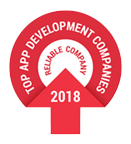Unlocking the Capabilities of Modern Genset Monitoring Systems

The modern industrial landscape is flexing harder than ever and power interruptions have become synonymous with disaster. Manufacturing organizations demand technologies that keep each core operation running without a hitch. In short, what they’re demanding is an IoT-powered genset monitoring system that provides a continual lifeline to key systems when the grid fails.
Traditional genset monitoring methods often make organizations vulnerable to unexpected outages. By placing their trust in advanced genset monitoring systems that are backed by intelligent data utilization, organizations & enterprises can ensure that the lights stay on and operations remain uninterrupted in an ever-connected world.
Genset Monitoring System & The Current State of Power Backup
In 2017, a major data center located in a metropolitan area incurred a massive power outage due to a severe storm. Mind you, this particular data center was a critical hub for numerous businesses, hosting their servers and accommodating heaps of valuable data. The outage disrupted operations for the associated businesses and resulted in financial losses and compromised reputation.
Our example confirms one thing. A data center is as good as the backup power system supporting it. If the power goes out, the data center goes down. This can lead to catastrophic outcomes for businesses that rely heftily on their data to run their operations.
Cue The Genset Monitoring System!
All potential and existing challenges can easily slide by when businesses have a robust and reliable IoT-led genset monitoring system in place. These systems play a critical role in bridging the gaps created by these challenges, providing immediate and reliable backup power when the grid falters. However, traditional genset monitoring methods have their limitations. They often rely on reactive maintenance, offer limited data visibility, involve manual processes, and lack real-time data analysis capabilities.
This can result in costly downtime and increased vulnerability. In the sections ahead, we’ll explore how advanced genset monitoring technology is poised to address these shortcomings, offering a transformative solution for manufacturing organizations and enterprise operations seeking to secure uninterrupted power in an ever-connected world.
The Power of Genset Monitoring System
At its core, genset monitoring technology involves a brilliant mix of tech. The real-time surveillance feature comprising a network of sensors and advanced software solutions collects data on various aspects of genset performance, such as fuel levels, temperature, and power output.
The data is then analyzed and interpreted to provide actionable insights into the condition of the genset. This proactive approach paves the way for early detection of anomalies, potential issues, or maintenance requirements, ultimately ensuring the genset’s readiness to spring into action when needed.
The Components At Work
An advanced genset monitoring system comprises several critical components:
Sensors & Telemetry Devices
Responsible for collecting data from the genset, including operational parameters and environmental conditions.
Data Processing & Analysis
Advanced software processes the data in real time, using algorithms to identify deviations from normal operation.
Alerting & Notifications
Responsible for sending instant alerts to designated personnel or triggering automated responses when it detects issues or maintenance requirements.
Remote Access & Control
Enables users to gain remote access to genset data and even control the genset when necessary, enhancing flexibility and responsiveness.
What Does Genset Monitoring System Have in Store for Manufacturing Organizations
Genset monitoring systems hold a wealth of advantages for manufacturing organizations, taking away almost the entire hassle associated with power supply and ensuring uninterrupted operations.
The Key Benefit To Rule Them All
One of the paramount advantages of genset monitoring for manufacturing organizations is its ability to prevent costly downtime and production interruptions. Did you know? The brunt of downtime results in up to 20% of production losses. A situation like this would never unfurl when there’s an IoT-backed genset monitoring system in place.
Genset monitoring ensures that backup power sources, such as generators, are in peak condition and ready to kick into action at a moment’s notice. Manufacturers, in particular, benefit from this proactive stance. With genset monitoring in place, they can maintain uninterrupted production, meet critical deadlines, and sidestep the expensive disruptions that sudden power outages can cause.
Additionally, genset monitoring systems provide invaluable real-time data and insights into backup power sources, allowing fleet managers to stay ahead of any downtime coming their way. With the same data, decision-makers can optimize power usage, plan maintenance schedules effectively, and allocate resources efficiently. The result? Improved operational efficiency, reduced costs, and heightened overall productivity.
What Makes Genset Monitoring System Worthwhile?
An IoT-powered genset monitoring system’s worthiness lies in its capacity to safeguard operations, reduce downtime, and enhance overall reliability, making it an invaluable asset for organizations reliant on uninterrupted power.
What more features are there in store? Let’s walk through them.
Features of a Reliable Genset Monitoring System
Real-time Data Collection
The purpose of a genset monitoring system is fulfilled with the involvement of sensors and telemetry devices. These devices continuously collect data on various parameters, such as ambient environment monitoring, fuel levels, etc.
Advanced-Data Analysis
Additionally, genset systems utilize advanced data analysis techniques, including algorithms and machine learning, to interpret the gathered data. This approach helps in identifying potential issues or maintenance requirements, enabling proactive intervention before problems escalate.
Alerting & Notifications
The system leverages customizable alerting and notification capabilities. At the time of anomalies or critical events, the alerting feature sends alerts to designated personnel via email, SMS, or other communication channels.
Remote Access & Control
Remote access allows users to monitor genset data and allows fleet managers to control the genset remotely. This feature enhances flexibility and responsiveness, particularly for operations distributed across multiple locations.
Scalability and Integration
These systems are scalable to effortlessly accommodate the growing needs of an organization. They offer seamless integration with the organization’s existing infrastructure and other monitoring solutions.
User-friendly Interface
With the amalgamation of an intuitive dashboard or interface, fleet managers can get access to simplified data. Plus, the platform has to offer accessibility to users with varying levels of technical expertise.
Compliance & Reporting
Most importantly, the system allows support to comply with industry standards and regulations. It should also generate comprehensive reports for auditing and analysis purposes.
Long story short, what makes a genset monitoring system worthwhile is its ability to provide proactive, real-time insights into backup power sources, ensuring the readiness of generators when needed. These essential features not only prevent costly downtime but also contribute to improved reliability of critical power systems.
Implementing Genset Monitoring System in Your Organization: Things to Keep in Mind
Deploying a genset monitoring system in your organization can be a transformative step towards ensuring uninterrupted power supply and achieving operational resilience. However, a successful implementation requires careful consideration of various factors. What factors there might possibly be? We’ll have to take a look.
The Factors To Consider Before The Implementation
Assess Your Needs
Begin by assessing your organization’s power backup requirements. Determine the number of gensets, their locations, and the criticality of the equipment they support. With this assessment in the bag, you’ll be able to select the right monitoring solution based on your needs.
Choose the Right Solution
Select a genset monitoring system that aligns with your organization’s size, complexity, and specific needs. Make sure to go with the option that offers scalability, compatibility with your organization’s existing infrastructure, and unhindered support in the long run.
Installation Process
The installation process typically involves integrating sensors and telemetry devices into your gensets. Depending on the size of your organization’s setup, you may need professional assistance for installation.
Training Requirements
Make sure to provide proper training to your employees in fleet management on operating and managing the genset monitoring system. This training is crucial for effective system utilization and troubleshooting.
Testing & Calibration
Before fully relying on the system, make sure to conduct thorough testing and calibration to leverage accurate data collection and alerting. This step is where you can Identify and rectify any potential issues.
ROI & Cost-Effectiveness
Calculate the potential ROI by estimating the cost savings from all the reduced downtime, maintenance optimization, and increased operational efficiency. Genset monitoring systems often prove highly cost-effective in the long run, as they help avoid costly production interruptions and emergency repairs.
In a nutshell…
By following these steps and paying careful attention to details during the implementation process, organizations cannot only experience a boost in their operational reliability but also contribute significantly to cost savings and business continuity.
Genset Monitoring System – In a Nutshell
Imagine, your organization makes substantial investments in its facility with the expectation of continuous, uninterrupted operations around the clock. However, with the possibility of unforeseen events looming in the corner like equipment failures and unexpected natural disasters, it’s inevitable for your plans to be disrupted.
This is precisely why a dependable genset monitoring system, backed with the incredible power of IoT is crucial. Such a system goes the extra mile to ensure that your system remains operational when you need it the most.















